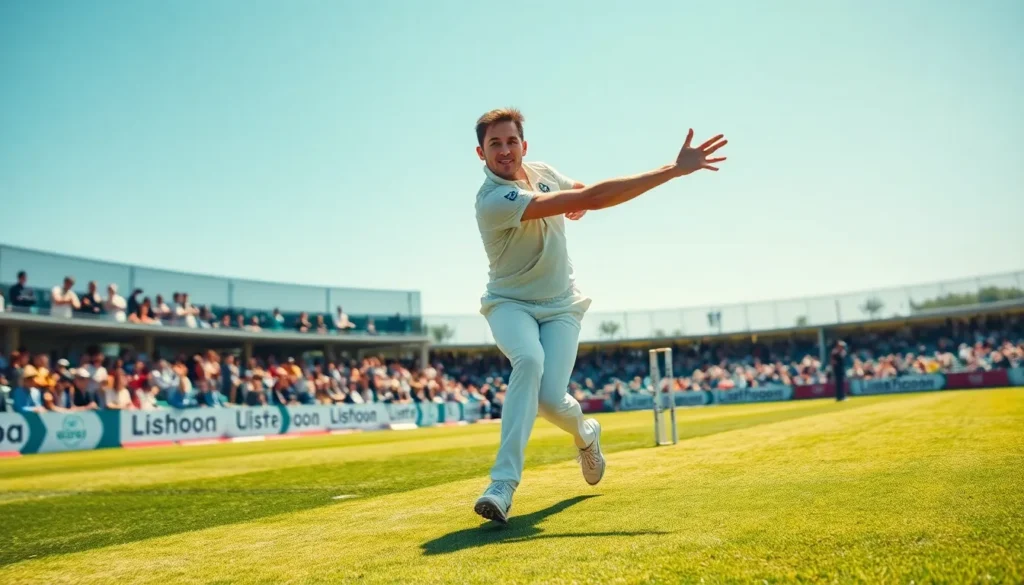Table of Contents
ToggleFast bowlers have a magical allure. Picture a cricket field bathed in sunlight, where the sound of leather on willow echoes in the air. Now imagine the world fastest bowler charging in, arms pumping, and unleashing a thunderous delivery that leaves batsmen quaking in their spikes. If you’ve ever pondered who among these speed demons reigns supreme, you’re in for a treat. Fast bowling isn’t just a skill: it’s an exhilarating spectacle that embodies both power and finesse. Let’s dive deep into the realm of fast bowling to uncover its history, the record-breakers, and what makes them tick.
Introduction to Fast Bowling

Fast bowling, as a formidable aspect of cricket, involves a player delivering the ball with astounding speed. The artistry of fast bowling lies in its pace, spin, and accuracy. Different bowlers adopt varied techniques, yet the core objective remains the same: to dismiss the batsman. Fast bowlers are often revered for their athleticism and endurance. The thrill they bring to the game keeps fans on the edge of their seats, eagerly anticipating every delivery.
Historical Context of Fast Bowling
Fast bowling has a storied history dating back to the early days of cricket. While underarm deliveries were commonplace in the 19th century, it wasn’t long before bowlers began to adopt the overarm technique, revolutionizing the game. Notably, figures like the legendary Australian bowler Fred Spofforth were pioneers in fast bowling, showcasing raw speed and aggression on the pitch. As the sport evolved, so did the nature of fast bowling, with technology and training enhancing the capabilities of bowlers across generations.
Top Fast Bowlers in History
Throughout cricketing history, several bowlers have made remarkable impressions with their speed and skill. Wasim Akram, often dubbed the Sultan of Swing, used his agility to add an extra dimension to his pace. Brett Lee, with his fierce speed, was a terror for many batsmen in the early 2000s. Then there was the iconic Dennis Lillee, who not only bowled fast but also inspired future generations of bowlers with his passion and skill. Today’s fans celebrate both past legends and emerging stars, whose contributions continue to shape the art of fast bowling.
Measurement of Bowling Speed
In cricket, measuring bowling speed involves advanced technology. Traditionally, speed was clocked using stopwatches, but today, high-tech devices, including radar guns and cameras, provide real-time data, ensuring accuracy down to the decimal. These tools capture the instantaneous speed as the ball leaves the bowler’s hand, giving a clear gauge of just how fast a delivery truly is. Speedometers at stadiums and advanced analytics platforms collectively ensure that fans and analysts keep a close eye on their favorite bowlers.
Factors Influencing Bowling Speed
Several factors contribute to a bowler’s speed. Firstly, physical conditioning plays a crucial role: strength, flexibility, and agility are pivotal. Also, technique and style matter significantly. A bowler’s run-up, arm action, and follow-through can dictate how fast they deliver the ball. Also, the type of pitch and weather conditions also influence the craft of fast bowling. For example, a dry, hard pitch may aid in generating more pace compared to a damp wicket.
Current Record Holders
As of now, the title of the world’s fastest bowler is often attributed to Shoaib Akhtar, who recorded an astonishing speed of 161.3 km/h (100.23 mph) in 2003. The speedmaster from Pakistan remains a benchmark for aspiring fast bowlers globally. But, others like Brett Lee and Shaheen Afridi have also made a name for themselves with their incredible speeds, marking their places in the annals of cricket history. The competition among bowlers intensifies as they continually push the envelope, striving to break the limits of speed.
Future of Fast Bowling
The future of fast bowling looks promising with advancements in training and technology. Coaches are now utilizing biomechanics to refine bowlers’ techniques, which not only enhances speed but also minimizes injury risks. Also, with the introduction of data analytics, bowlers can assess their performances more effectively. Emerging talents, fueled by rigorous training and state-of-the-art equipment, promise to elevate the standards of fast bowling even higher in the years to come.










